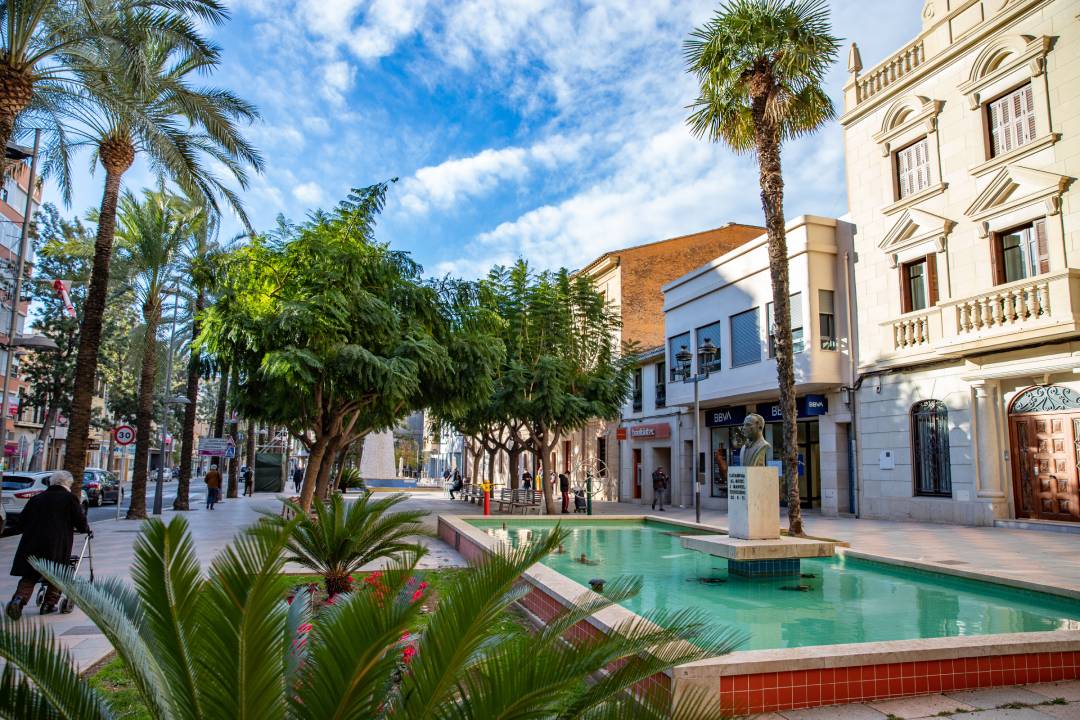Catarroja
Catarroja is located in l’Horta Sud, 8 km from Valencia, on the banks of the Albufera Lake. Its landscape is characterized by its agricultural lands and the surrounding wetland, where boats, rice and the port shape its essence. The village has been traditionally dedicated to fishing and the cultivation of rice, although there is also a strong furniture industry.
Gastronomy:
Catarroja is a great place to enjoy typical Valencian cuisine, with special mention to be made of its stews. This is the birthplace of the traditional stew “all i pebre”. Furthermore, as is typical of the Valencia area, it offers a wide range of dishes based on rice, including: paella, “arròs amb fessols i naps” (rice with beans and turnip), and the classic “arròs negre” (rice with squid’s ink).
Places of interest:
The centre of Catarroja is possessed of great beauty. Mention may be made of the Vivanco House-Palace, a residential palace dating from the mid 18th century. It belongs to the Baroque style, although it has neoclassical features. It is a clear example of a Valencian bourgeois residence. It has been declared of Cultural Interest.
Other interesting architectural works: Church of Saint Michael (1701), Chiva ravine bridge (1767) and municipal market (1926). Local natural sites include the Albufera Natural Park, which is located just a few kilometres from the city of Valencia, offering a rich, natural landscape.
- Church of Saint Michael. Archpriest church situated in “les Barraques” neighbourhood. The restoration work, paid for by local fishermen, concluded in 1701.
- Roman Villa. It is currently buried, and only one entrance can be seen. This is due to the speculation carried out by the local council and the fact that a college has been built nearby.
- The stone bridge, dating from 18th century, which joins Catarroja and Massanassa. The original handrail has been replaced with an aluminium version.
- Vivanco House – Palace. A building dating from the mid-18th century, which combines a main neoclassical façade with decorative elements from the late Baroque period. It was constructed for the commercialisation of agricultural produce and silk, and especially olive oil and wine, and was adapted for these functions. This is an example of the strong influence of the nobles’ customs on the local bourgeoisie traders. It is currently used as the Town Hall.
- Municipal Market. An especially interesting building that dates from 1926. It has a rectangular layout and chamfered corners, and is accessed via six doors.
- Catarroja Port, located on the Albufera Lake and where we can find buildings such as “Casa Sulema”, “Casa Baina” and Casa Primitiva”, all saved from property speculation. The only one which retains its uniqueness is “Casa Sulema”.
Festivities:
– Saint Anthony the Abbott. On 17th January, at the start of the winter solstice, Catarroja celebrates a festivity in honour of Saint Anthony the Abbott. The evening before and the day of the Saint are marked by a procession, the sale of “Porrat” (sweets) in the streets and by bonfires. This commemoration also includes the traditional blessing of animals and a parade of horses and carriages, together with the sale of the typical ” St. Anthony’s bread”, blessed buns made with “seeds” in the Parish Church of Saint Anthony.
– “Fallas”. “Las “Fallas” are celebrated each year from 14th to 19th March, and are very popular locally. There are 10 “Fallas” located throughout the neighbourhoods and coordinated by Unió d’Associacions Falleres.
– “Mig any”, Moors and Christians festivities. A Moors and Christians festivity. The festivities are held in celebration of the fact that there are less than six months left until the celebration of Catarroja’s Moors and Christians Festivities. The 8 groups (filás) enter the village wearing their traditional djellabas. Furthermore, a large medieval market is set up in the old part during this weekend, and a range of events are programmed in the area surrounding the Church of Saint Michael. It is always held on the last weekend of April.
– Saint Peter. Celebrated on 29th June. Festivities held in honour of Saint Peter in the fishing neighbourhood of Les Barraques (old centre), and especially on 30th June, when the entire neighbourhood enjoys “el día del Perro”, with paellas and fancy dress. Events include the carrying of an effigy of the saint from the old town to the port, where it is placed in a boat and taken to the middle of the Albufera lake. Once there, a mass is held for the attendees come by boat.
– Festivities in honour of Saint Michael: held during September, coinciding with the end of the rice harvest. The festivities include Moors and Christians, which attract massive crowds and include different events, such as “las embajadas”, the entrance into the village of bands, the “alardo de arcabucería” and the Grand Entrance of Moors and Christians (the event which attracts the largest crowds). It has 8 groups distributed between the two sides; 5 Moor and 3 Christian. The main festivities also include the Internment “Allipebre” Competition in the Port of Catarroja, a Lateen regatta (a local sport practiced in the Albufera Natural Park); and the procession of Saint Michael, which includes the participation of the 17 effigies that are venerated in the city (one of the processions with the largest number of saints).
– The Sacred Christ of Mercy. These festivities, transferred to the week prior to the main festivities, have seen the recovery of an old tradition: the spectacle of “La Carxofa”.
– Other festivities: other festivities are held throughout the year in the town’s other neighbourhoods, such as the festivity of El Pilar, held in October, the festivities held in honour of Our Lady of the Mine, better known as “María Madre”, in May, the festivities held in honour of Our Lady of the Forsaken, also held in May, and Saint Anthony of Padua, held in June.









